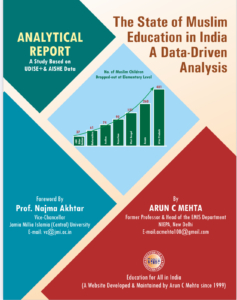The Future of Supply Chains: What to Expect in the Next Decade
The global supply chain, once an invisible network that worked silently in the background of our lives, has become a topic of global conversation. The past few years have been a stress test worldwide, revealing the incredible importance and the surprising fragility of the systems that move goods worldwide. This period of disruption hasn’t just caused temporary problems and ignited a permanent, fundamental transformation.
As we look towards the next decade, the supply chain will evolve more rapidly than it has in the past fifty years. The focus is shifting dramatically from a singular obsession with cost-cutting to a more balanced and intelligent pursuit of resilience, agility, sustainability, and automation. The supply chain of the future won’t just be a series of logistical steps; it will be a self-aware, predictive, and highly automated ecosystem.
For professionals in the field, this is a pivotal moment. The skills that were valuable yesterday are becoming table stakes today. To lead in this new environment, a modern Supply Chain Management course is not just about logistics and inventory but data science, risk modelling, and sustainable innovation.
Here’s what to expect in the next decade as these powerful forces reshape the future of supply chains.
1. The Hyper-Connected, Autonomous Supply Chain
What to Expect: Today’s “digital twin” concept will evolve into a fully autonomous, self-orchestrating system. Imagine a supply chain that doesn’t just give you alerts, but takes action on its own. An AI-powered core will constantly analyse real-time data from IoT sensors on every pallet, autonomous trucks, smart containers, and satellite weather imagery.
- Self-Healing Logistics: If a port strike is predicted in Singapore, the system will automatically re-route shipments to alternative ports and re-book new vessels, all before a human planner is even aware of the potential disruption.
- Autonomous Last Mile: Fleets of drones and sidewalk delivery robots will become commonplace for last-mile delivery in urban areas, managed by an AI that optimizes routes based on traffic, weather, and delivery priority in real-time.
- Smart Contracts on Blockchain: International trade will be streamlined using blockchain-based smart contracts that automatically trigger payments when goods are verified at each checkpoint, eliminating paperwork, reducing fraud, and accelerating cash flow.
2. The Rise of the Circular and Sustainable Network
What to Expect: Sustainability will move from a corporate social responsibility initiative to a core operational and financial metric. Pressure from consumers, investors (via ESG ratings), and regulators will make sustainable practices non-negotiable.
- “Reverse Logistics” as a Profit Center: The process of managing returns will become a sophisticated operation focused on the circular economy. Products will be designed for easy disassembly. Returned items will be automatically sorted for refurbishment, parts harvesting, or recycling, turning a cost center into a valuable source of materials and revenue.
- Radical Transparency: Consumers can scan a QR code on a product and see its entire journey, from the sustainable farm where the raw material was grown, to the factory with verified fair labour practices, to the carbon footprint of its delivery. This “provenance” will become a key brand differentiator.
3. The Talent Shift: From Planners to Data Scientists and Strategists
What to Expect: As AI and automation handle the day-to-day operational decisions, the roles of human professionals will be elevated. The demand for traditional planners will decrease, while the demand for highly-skilled strategic thinkers will soar.
- The Supply Chain Data Scientist: This will be one of the most in-demand roles. These professionals will be responsible for building, training, and fine-tuning the supply chain’s AI models.
- The Risk and Resilience Strategist: This role will focus on modelling future threats, from climate change and geopolitical instability to new pandemics, and designing supply networks to withstand these shocks.
This evolution in roles underscores the importance of advanced, specialized education. A premier program, like an IIM Supply Chain Management course, is designed precisely for this future, cultivating leaders who can think strategically, manage complex data, and lead in a technologically advanced, global environment.
4. The “Glocalization” of Manufacturing
What to Expect: Moving manufacturing closer to home (nearshoring or reshoring) will accelerate, but with a high-tech twist; this won’t be a return to the giant factories of the past.
- Micro-Factories and 3D Printing: Companies will operate smaller, highly automated “micro-factories” near major customer hubs. These facilities will use technologies like 3D printing and robotics to produce customized goods on demand, dramatically reducing lead times, shipping costs, and inventory waste. For example, a company could 3D-print a specific spare part for a customer in a regional hub, rather than shipping it from a central warehouse halfway across the world.
Concluding Observations: The Dawn of the Sentient Supply Chain
The next decade will see the supply chain transform from a series of discrete, human-managed steps into a sentient, interconnected organism. It will be a system that can sense disruptions, think through solutions, and act autonomously to keep commerce flowing. For businesses, this means unprecedented efficiency and resilience. It means faster, more transparent, and more sustainable access to goods for consumers. And for the professionals who lead this transformation, it represents one of the most exciting and impactful challenges of our time—building the intelligent arteries of our future global economy.





